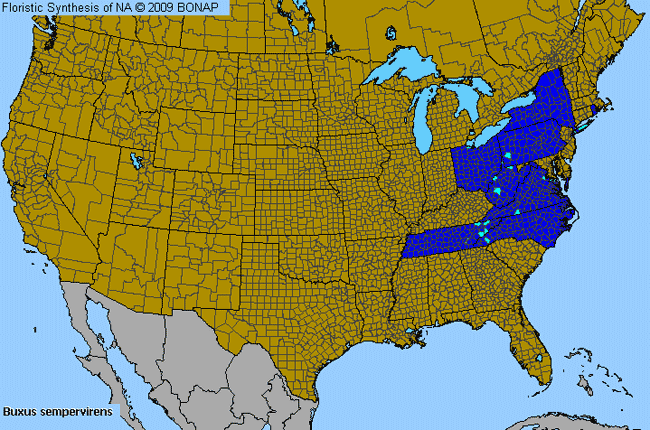Common Box (Buxus sempervirens)

Common Box Species Description

These plants are from foreign areas (those that occur outside of North America north of Mexico) that have been released intentionally or unintentionally. Plants that have been disseminated or escaped as a result of human activity, and become established somewhere within the United States, Canada or Greenland.
Allergenicity: No allergy has been reported for Common Box (Buxus sempervirens) species.
Pollination: Occurs in following seasons depending on latitude and elevation: Spring.
Angiosperm - Flowering Dicot: Plants in this group have two embryonic leaves (dicotyledons). Examples of dicotyledons are beans, buttercups, oaks, sunflowers, etc.
Tree: A large plant, not exactly defined, but typically over four meters in height, a single trunk which grows in girth with age and branches (which also grow in circumference with age).
Shrub: A woody plant smaller than a tree, and usually with several stems from the same root.
Perennial: Living for many years.
Woody Stem: Non-herbaceous. Lignified.
Evergreen: Retaining leaves throughout the year including changing seasons.
Common Box Species Usage

Pharmacological: Used in medicine or pharmacological research.
Related Links

More Common Box (Buxus sempervirens) imagesby Jessie M. Harris from BONAP










